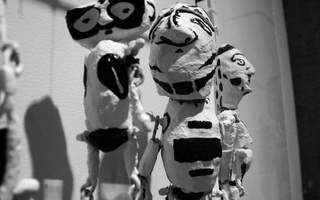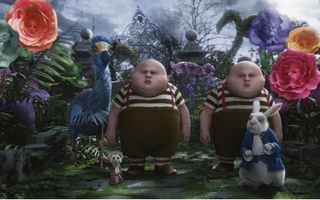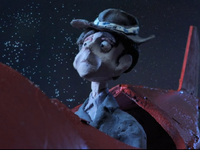For one of her class projects, Fiorenzoli filmed herself walking around Harvard, then rendered herself as a cartoon. As she went along, everything she touched turned into a cartoon as well. The final product was a five-minute video of 15 frames per second. To make a video like this, Fiorenzoli used a technique called rotoscoping.
“[Rotoscoping is] where you take a live film and you trace things in the scene, then remove the image and all you’re left with is the drawing,” Fiorenzoli explains. “You can capture live movement with a drawing to make your animation realistic. I really loved it because it was magical. You just draw it and it comes to life.”
Another popular form of animation is claymation, a type of stop-motion animation. Artists sculpt their characters and convey movement by making slight changes in the position of the figure, taking pictures at each step. The images are then compiled into a video to make it look as though the character was actually moving.
According to Fiorenzoli, the technique is time-consuming, as the movements from frame to frame can be minute. “The difference has to be small enough for the motion to be fluid.”
TOOLS OF THE TRADE
Fred C. Hua ’14, one of the four students doing a thesis in animation this year, originally intended to concentrate in Human Developmental and Regenerative Biology. After taking an animation course with Lingford the spring semester of his sophomore year, however, his passion for art swayed him to concentrate in VES and study animation. "I went in thinking, ‘Oh, I care about science’…[But] I'd rather have creative freedom," Hua says.
Hua describes the animation and filmmaking classes at the College as mainly theory-based. “It’s hard to improve on technical skill, but [the classes do] sensitize you to art, which is helpful and something I feel not everyone gets,” Hua says.
Over the summer, Hua worked at a company that required him to do 3D animation. Coming back to Harvard, however, he found that there weren’t many 3D animation resources available.
“[The department] currently has one dedicated 3D software, and that’s Autodesk Maya,” Hua says. “As for asking the department for software, it’s hard because there’s no one around to teach it. It’s kind of useless when you don’t have the interest or the push because many students are intimidated by 3D.”
However, students do feel that the VES Department does provide many useful resources. “We didn’t pay for anything, [the] studio was available 24/7, and [we were] given high-quality cameras to use on campus and rent out for the weekend,” Fiorenzoli says.
Oliver Luo ’13, who is currently in Prague learning puppet animation from Czech animators, agrees. In an email, Luo wrote, “[There are a] tremendous amount of resources,” referring to the funding from the department, the studio facilities housed in Sever, and the staff and faculty. “I think I was definitely spoiled with support from basically everyone.”
FROM HARVARD TO DISNEY
Hua’s perception of a disconnect between the animation classes Harvard offers and the skills needed in the real world is echoed by Susan L. Bin ’16, for who animation is much more than a hobby. Bin, who plans to concentrate in VES and study filmmaking, has been animating for years. Her experiences with art school have shaped her opinion about how Harvard’s approach the creative process, including animation, differs from that of traditional technical schools.
“Someone here comes at it with this very liberal arts point of view, like ‘Where does this fit into the way I educate myself?’” Bin says. “Whereas at the traditional technical schools, they’re like, ‘I can’t breathe without animation.’ Harvard kids tend to be less affected in that way, less emotionally involved.”
Bin, who hopes to one day work in a large commercial animation studio, has considered the difficulties of breaking into the industry from Harvard. “When it comes to the arts disciplines, having anything that says you’re from Harvard doesn’t impress anyone,” she says. “Harvard likes more fine arts and conceptual work, which is not at all what these companies look for.”
Read more in Arts
"Man of Tai Chi" The Tao of KeanuRecommended Articles
-
Academy Awards Nominate Alumnus For Animated FilmA former lecturer in Visual and Environmental Studies at Harvard has received an Academy Award nomination for his nine-minute animated
-
Movie Review: RobotsBefore entering the sneak preview screening of Robots—the newest computer-graphic (CG) animated film by Blue Sky Studios (Ice Age) and
-
 A 'Frame by Frame' History
A 'Frame by Frame' History -
Scientific Animation Spurs Artistic Creation“Artists and scientists find each other very exotic—they idealize each other,” says Professor Ruth Lingford. “Artists are in awe of ...
-
 Alice in Wonderland
Alice in Wonderland

















